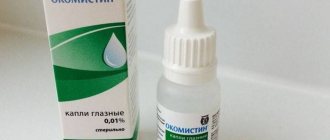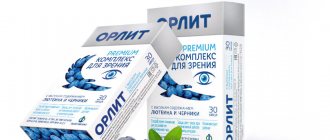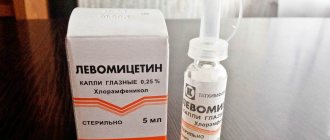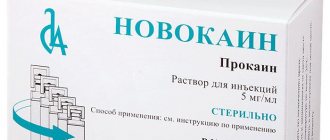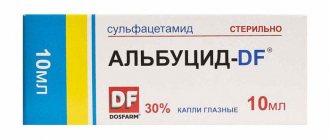Analytical composition, conditions and validity periods
Baktofit is an environmentally friendly means of protecting plants from fungal and bacterial diseases.
The drug is based on a microculture - Bacillus subtilis, strain IPM 215. Better known as Bacillus subtilis. For the first time isolated from the upper layers as an aerobic microorganism. The nutrient medium for it is dry, herbaceous plant residues - hay. That's why it got its name.
From a classification point of view, Baktofit belongs to the bactericidal fungicides. It is effective against a wide range of disease-causing pathogens that cause plant diseases such as:
- powdery mildew,
- Downy mildew is downy mildew.
- Late blight,
- Fusarium.
- Bacteriosis,
- Septoria
- powdery mildew
- Wilt - Verticillium wilt
- Root rot
- Oidium - powdery mildew of grapes and others.
The use of the drug has certain limitations. For effective action, favorable weather conditions are required - high humidity and relatively low temperatures.
Baktofit - what is it and what is it used for
Description of the fungicide Baktofit
An effective biological product against fungal and bacterial plant diseases. It is often used when it is not possible (or desire) to use chemical fungicides. Bactofit is very good as a prophylactic agent.
Active ingredient : Bacillus subtilis strain IPM 215.
Manufacturer : (Russia).
Release form
- wetting powder BA-10000 IU/g, titer no less than 2 billion spores/g
- suspension concentrate BA-10000 EA/ml, titer 100 million cells/g
- for use at home or in the garden, available in 10 g, 40 g packaging
Mechanism of action : contact, the bacteria Bacillus subtilis synthesize an antibiotic that suppresses the activity of pathogenic fungi.
Baktofit: instructions
This biological fungicide is used to suppress and destroy pathogens of the following plant diseases: bacteriosis, verticillium wilt, root rot, powdery mildew, oidium, downy mildew, septoria, late blight, fusarium.
Application of bactofit
- For soaking seeds, bulbs and tubers before planting. Place seeds in the bactofit solution for a day, bulbs and tubers for 10-30 minutes.
- For soaking the root system when replanting plants. To do this, dip the roots in the solution and soak in it for 2 minutes.
- For spraying plants on leaves. Leaves need to be wetted on both sides.
- For watering the soil under bushes during the growing season. Dilute the drug at the usual watering rate.
- For combined use with herbicides, which reduces the content of toxicogenic soil fungi.
Most often, gardeners and vegetable gardeners use Bactofit for cucumbers, tomatoes, and grapes. It helps cope with powdery mildew, peronosporosis, late blight and oidium, respectively. It is also used for indoor flowers, in particular it is effective for orchids.
How to breed bactofit
- To soak seeds against mold and other infections - 1 ml of suspension or 1 gram of powder is diluted in 0.5 liters of water;
- for soaking cuttings of garden flowers (carnations, roses) for 15 minutes before planting - consumption rate: 1 gram of the drug per 1 liter of water;
- for powdery mildew 10 ml per 10 liters of water for spraying on the leaf;
- against powdery mildew, downy mildew, septoria: 20 ml per 10 liters of water for watering bushes;
- from grape oidium: 30 ml of suspension per 10 liters of water for spraying bushes;
- against fusarium, brown rust, late blight: 20 ml per 10 liters of water for spraying or 30 ml per 10 liters of water for irrigation;
- against fungal spots on indoor and garden flowers: 1 ml per 1 liter of water for spraying;
- from root rot on indoor and garden flowers: 3 ml per 1 liter of water for irrigation.
How often can you treat
Repeat treatments every 6-7 days, three times in total, after which it is necessary to change the drug if the disease is not cured or further prevention is required. Although up to 8 treatments with Baktofit are allowed, since the drug does not cause resistance.
The disadvantages of this biofungicide: it practically does not work in dry, hot weather. High efficiency at humidity 60-70% and ambient temperature 18-20 degrees.
Baktofit is not phytotoxic. But the treatment should be carried out in protective clothing. The working solution cannot be stored; it must be used within 3-4 hours from the moment of preparation.
Reviews about the drug Baktofit
People often ask - which is better, Baktofit or Fitosporin? My answer is this: Fitosporin is more often used for garden plants due to its greater effectiveness. Strains of the bactophyte bacterium are somewhat weaker than phytosporin strains, but the effectiveness of testing the drug is on average 65-70%, if the plant is already sick. This is also a very good result.
Bactofit has an excellent protective effect against gray mold infection, especially during periods of unfavorable weather (rain, cool weather). But spraying and watering must be done a day before the rain, at least 6 hours before the rain, and repeated after 4-5 days.
We invite you to share your experience of using this biological fungicide in the comments. What diseases have you been able to prevent or cure with Bactofit? Would you recommend this product to other gardeners? Thank you!
Your feedback and additions to this material will help our readers evaluate this product more effectively and decide whether it is worth purchasing or not.
Buying bactofit is currently not a problem - it is sold in any retail or online gardening store. Price for Baktofit in 2020, packaging 10 grams - 35-40 rubles, 100 ml - 130-140 rubles, 100 g (Sibbiopharm) - 250 rubles.
Reviews from gardeners
- Lyudmila
It was suggested by a neighbor in the country and now I soak gladioli bulbs, dahlias, and bulbous bulbs in a bactofite solution. Now my flowers are not affected by any fungal diseases. Everything is clean and the planting material is excellent.
Form of production and equivalent substitutes
A mulched bed is the optimal environment for the effective use of the Baktofit preparation.
Distributors offer the drug as a wettable powder or concentrated suspension.
If it was not possible to purchase Baktofit, to some extent it can be replaced by other biofungicides containing various strains of microculture Bacillus subtilis
- Phytosporin → how to use phytophotora in the garden,
- Agate – 25 K,
- Alirin – B → instructions for use,
- Gamair → how to use.
Important! One of the most effective is considered to be “Mikosan”, (see → how to use) a systemic biofungicide that stimulates the synthesis by plants of substances that destroy the cell membrane of pathogens.
With the exception of Mikosan, the effect of the listed drugs, as well as Baktofit, is based on the characteristics of Bacillus subtilis. Under favorable conditions, it produces specific substances, antibiotics, which suppress the growth and reproduction of pathogenic pathogens of fungal and bacterial diseases.
This explains the preventive effect and therapeutic nature in the early stages of infection. It cannot protect severely affected plants. Support is required in the form of more powerful security tools. You should not expect from this drug and its analogues a complete guarantee of a cure for already diseased plants. Biological substances exhibit preventive properties, as well as effectiveness in the initial stage of infection.
Distributors offer the drug as a wettable powder or concentrated suspension. In the photo: 1 – Plastic bag – 10 g 2 – Bottle – 40 g.
If the disease has progressed far, biofungicides are replaced with chemicals:
- Topaz → instructions for use + reviews,
- HOM → use of the drug with reviews,
- OxyHOM → instructions for use, application rates,
- copper sulfate,
- Bordeaux mixture → application with reviews,
- Kuprolux,
- Cuprazole,
- Vectra,
- Previkur – Energy → how to use + reviews,
- Ordan → how to use, application rates,
- Speed → application + reviews,
- Ridomil Gold → instructions for use.
Tip #1 : When processing plants, it is important to remember that Baktofit cannot be combined with other preparations, even those that contain different strains of the microculture of the same name, for example “Fitosporin”. It is better not to combine this drug with any other fungicides or insecticides.
Analogues of the drug
biofungicides containing various strains of Bacillus subtilis microculture, can also be used as analogues of Baktofit These include “Fitosporin” , “Agate”, “Alirin”, “Gamair”, etc. Their action is also based on the production of specific substances - antibiotics, which suppress the growth and reproduction of pathogenic pathogens of fungal and bacterial diseases.
If the disease cannot be controlled with biological fungicides, then chemical fungicides . By purpose, this group should include - “Hom”, “OxyKhom”, “Topaz”, “Copper sulfate”, “Bordeaux mixture” , “Cuprolux”, “Cuprazol”, “Previkur - Energy” , “Skor”, etc.
*Changes and additions were made on July 6, 2019.
Instructions for use
If Bactofil cannot cope with severe plant infection, it is replaced with a more powerful chemical agent, for example, Rodomil-Gold.
General recommendations
- The effectiveness of the drug increases if mulch is used.
- The result of use is higher on soils with an acid-base balance pH - 7 - 7.3, neutral or slightly alkaline reaction .
- If coniferous mulch is used, the acidic environment must first be neutralized. For example, optimizing substances are applied to the soil in the fall, and Baktofit is used in the spring of the following year.
- Bacillus subtilis does not tolerate chlorine . If water from a centralized water supply is used, it must be settled so that chlorine-containing substances evaporate. Ideally, the product is prepared in filtered rainwater.
- The working solution is formed from powder or concentrated suspension, in the concentration required for each type of crop.
For soaking seeds, tubers, cuttings, processing seedlings
| Purpose | Name of the disease | Working solution – PP | How to use |
| Soaking seeds for disinfection | Late blight Varied mold | 1 g (or 1 ml) per 0.5 l of water | The seeds are poured so that the liquid completely covers them. Leave for 18 – 24 hours. It needs to be dried before sowing. |
| Soaking potato tubers, onions, rhizomes of ornamental plants | Root rot Late blight | 2 g (or 2 ml) per 1 liter of water | The tubers are soaked for ½ hour before planting. |
| Processing cuttings | From rotting | 1 g (or 1 ml) per 1 liter of water | Soak the part of the cutting that will be placed in the ground for 15 - 30 minutes before planting. |
| Watering seedlings | From the black leg | 2 g (or 2 ml) per 1 liter of water | Before sowing seeds and when seedlings appear, water the plant substrate. |
Preventive treatment of vegetable crops
For watering tomatoes, potatoes, cucumbers, cabbage, prepare a working solution based on -
20 g of powder or 20 ml of concentrated suspension per 10 liters of water.
Apply this way:
| Name of culture | Name of the disease | Consumption rate of working solution (*RR) | Application procedure |
| Tomato | Late blight | 100 ml per 1 plant | For spraying after complete survival of seedlings in open ground, after the growth of 2 - 3 young leaves. |
| Fusarium | 200 – 250 ml per bush | Water after flowering, or when the first signs of disease appear. | |
| Root rot | |||
| Potato | Late blight | 0,2 – 0.25 l per bush | During tuber germination. At the stage 8 – 10 cm tall. |
| Fusarium | |||
| Septosporosis | |||
| Cucumber | Downy mildew | 100 ml per 1 plant | For watering rooted shoots or seedlings. |
| Powdery mildew | 250 -300ml per 1 m2 | Root watering of fruit-bearing plants. |
The total number of treatments during the growing season is 7-8.
Powdery mildew on cucumbers, if not dealt with, will destroy the entire crop. Bactofit begins to be used for spraying seedlings (seedlings) after establishment in open ground. Repeated watering is carried out at intervals of 10 days.
The interval between applications is 1 week.
There is no waiting period - the fruits can be eaten immediately after watering, but be thoroughly washed first.
To prevent diseases of fruit crops
In the spring, after clearing the garden of dry plant debris, fresh mulch, such as hay or straw, is placed around the tree trunks in the tree trunk circle and watered with Baktofit solution. It is prepared in a ratio of 30 - 40 g (ml) per 10 liters of water.
Consumption rate:
- for seedlings and young trees up to 5 years old – 50 – 60 ml per 1 m2 of crown,
- berry bush – 60 – 100 ml,
- adult fruiting tree – 5 l.
The solution is applied evenly along the periphery of the tree trunk circle.
Baktofit prevents the spread of fruit rot, powdery mildew on gooseberries and currants, scab on apple and pear trees, etc.
Prevention and treatment of oidium - powdery mildew of grapes
- Working solution – 30 g (or 30 ml) per 10 liters of water;
- Consumption rate – 500 ml per 1 m2 of crown for spraying before flowering. For root watering – 1 liter per 1 m2 of soil.
- The frequency of application is 2 – 7 times, to prevent infection of grapes with oidium or when the first symptoms of the disease appear. If during the growing season the bushes were treated only with biological means of protection, the waiting period is not relevant. You can spray the bunches with Baktofit and immediately cut them for eating. It goes without saying that the berries need to be washed before eating.
If the vine is severely damaged, Baktofit will not help. Treatment will need to be carried out using a chemical agent. In this case, the period from processing to harvest must be maintained in accordance with the recommendations for the drug.
Preparation Baktofit, 40g
Baktofit is an effective and high-quality drug for protecting grain, vegetable, fruit and berry crops from fungal and other diseases. The drug has an anti-stress effect on grain crops, increasing their yield. Reduces the effects of stress on plants after pesticide application. Treatment is possible during the period of fruit growth and ripening. Does not cause addiction in pathogens. Safe for humans and the environment.
Manufacturer: August
Country of origin: Russia
Waiting period: not regulated
Compatibility with other drugs: it is not recommended to mix with other drugs
Period of protective action: retains biological activity for 7-20 days depending on the pathogen
Selectivity: the drug is effective against many fungal and bacterial diseases
Speed of action: the drug suppresses the causative agent of plant diseases within a day after application
Phytotoxicity: the drug is not phytotoxic
Crop tolerance: plants tolerate treatment well
To buy the drug Baktofit, add the product to your cart and enter the details for delivery of the product to your address.
DETAILED INFORMATION ABOUT THE PREPARATION BAKTOFIT AND INSTRUCTIONS FOR USE
Baktofit is a biological preparation that copes well with fungal and bacterial diseases of vegetable, grain, flower and medicinal crops (powdery mildew of tomatoes, cucumbers, pears, apple trees, downy mildew of hops, root rot, cabbage bacteriosis, late blight of potatoes and tomatoes, verticillium cotton wilt).
The product contains spores and cells of the Bacillus subtilis culture, active substances with antibiotic and antagonistic properties, as well as growth-regulating components that enhance plant growth.
The drug Baktofit, developed by a biotechnological company, is produced in the form of a wettable powder (SP). The powder dissolves well in water, has a color from light gray to yellow and a slight odor. The powder contains a concentrate of the culture liquid with the remains of the nutrient medium, an active substance, an “adhesive”, a filler and a stabilizer. Biological activity of Baktofit – 10,000 units/g.
The drug is used for:
– pre-planting treatment of seeds and tubers;
– treatment of roots during plant transplantation;
– spraying or watering plants during the growing season;
– combination with herbicides.
Baktofit, which can be purchased at a very low price, has many advantages:
– versatility and wide spectrum of action;
– strengthens plant immunity, including mitigating the effects of chemical pesticides;
– retains sufficient activity even with a lack of moisture;
– can be used in all phases of plant development and has a short waiting period for the effect, so treatment can be carried out even during fruit ripening;
– does not linger in the soil and treated plants;
– stimulates the development of beneficial microorganisms in the soil;
– prevents the formation of resistance in pathogenic bacteria, so treatment can be carried out repeatedly until the desired result is achieved;
– allows you to increase productivity by an average of 10-20%.
Baktofit is not phytotoxic, it does not affect the smell and taste of the treated plants. The drug is harmless to humans and animals; it is also not dangerous to bees, fish and aquatic organisms, and beneficial entomofauna. The product is approved for production and use in agriculture by the Scientific Research Center for TBP.
The shelf life of the biological product is 1 year at a temperature of 0 to +20 ° C in a cool place, protected from light. The drug is hygroscopic and must be stored in an airtight closed container.
Baktofit: instructions for use
Baktofit is especially effective for pre-sowing seed treatment and spraying of vegetative plants. The bioactivity of the drug remains on plants and in soil for 7-20 days. It is recommended to treat plants as soon as the first signs of the disease appear.
It is recommended to prepare the working solution immediately before use, so that the entire prepared working solution is used in one day. The instructions prohibit storing the Baktofit solution.
The drug must be diluted in a small amount of water, poured into the sprayer tank, which is half filled with water, mixed thoroughly, and then added water to the required volume. The drug can be used both for spraying vegetative plants and for treating seeds. Spraying plants is best done in the morning or evening hours, in dry weather without strong wind.
To treat cucumbers in protected soil against rot, it is necessary to soak the seeds in a suspension of the biological product for 3-6 hours before sowing and dry them. The consumption rate of the drug in this case is 2 g/l of water, and the consumption of working fluid is 100-150 ml per 100 g of seeds. This procedure increases the growing season of cucumbers by one month and eliminates root rot by 65-70%.
In order to resist fusarium in protected soil carnations, you need to soak the cuttings in a solution of the drug (1 g/l of water) for 15 minutes immediately before planting them.
To combat powdery mildew on protected soil roses, it is recommended to dip the cuttings before planting in a 0.1-0.3 suspension of the drug (1-3 g of the drug per 1 liter of water), while 1 liter of solution is enough to treat 500-1000 cuttings. Another option is to spray the plants during the growing season with a solution of 70 g of Baktofit per 10 liters of water 1-2 times a month or more often. For spraying, the consumption rate of the working solution is 10 liters per 100 sq.m. The experience of agronomists shows that three-time treatment with Baktofit with an interval of 6-10 days is the most effective tactic for combating powdery mildew.
The drug Baktofit combines well with other plant protection products, in particular with chemical herbicides. At the same time, it has an anti-stress effect and increases the yield of grain crops:
– with Banvel, Topic, Difezan and Logran – by 4-7%;
– with Elamet, Terramet, Elant and Octapon – by 10-15%;
– with Cortez and Cheetah – by 20-22%.
Biofungicide for protecting indoor plants
The use of chemical protective agents at home is extremely undesirable, since the vast majority of all drugs in this category are toxic substances.
This is why biofungicides are a good alternative. It should be taken into account that they act as prophylactic agents, including Baktofit. With its help, you can prevent root rot of plants and some types of spots.
At home, the working solution is prepared as follows :
- 3 ml (or 1 g) per 1 liter of water for watering the plant substrate against root rot . The application rate is determined individually - the solution should wet the entire soil lump and appear in the pan. Excess liquid is removed. The substrate can be processed before planting. During the growing season, the drug is applied once every 10 days.
- 1 ml (or 1 g) per 1 liter of water against leaf spots.
If after three treatments the drug does not help, it needs to be changed to another fungicide.
A serious mistake gardeners make when using Baktofit
- Often gardeners begin to use the drug when the plant infection has become significant.
The fungicide will only help in the early stages of the disease. To prevent the development of the disease, an inspection is carried out in the spring, as soon as young leaves grow. Many symptoms first appear on the underside of leaf blades. Therefore, the examination is carried out by examining the plant from all sides. When spraying, you need to make sure that the solution gets to all above-ground parts. And when root watering, the liquid needs to be evenly distributed around the crop.
Bactofit consumption rates
- for soaking seeds against mold and other infections 1 ml of suspension or 1 g of powder or per 500 ml of water
- soaking cuttings of garden flowers (carnations, roses) for 15 minutes before planting: 1 g per 1 liter of water
- against powdery mildew 10 ml per 10 liters of water for spraying on the leaf
- against powdery mildew, downy mildew, septoria: 20 ml per 10 liters of water for watering bushes
- from grape oidium: 30 ml of suspension per 10 liters of water - spraying
- against fusarium, brown rust, late blight: 20 ml per 10 liters of water for spraying
- against fusarium, brown rust, late blight: 30 ml per 10 liters of water for irrigation
- against fungal spots on indoor and garden flowers: 1 ml per 1 liter of water for spraying
- from root rot on indoor and garden flowers: 3 ml per 1 liter of water for irrigation
Repeated applications are required every 7 days, three times in total, then the drug must be changed if the disease is not cured or further prophylaxis is required, although manufacturers recommend up to 7-8 applications, since the drug does not cause resistance.
Reviews from experienced gardeners
- Anna Rostislavovna (Rostov-on-Don)
I use Baktofit three times: I soak the tomato seeds, water the seedlings after picking, and the third time when the tomatoes take root in the garden.
I tried to water it in the summer, but it was of no use, because in June-July we have terrible heat, and the product does not work.
- Nikolay Ivanovich (Morozovsk, Rostov region)
Baktofit suits me because it is non-toxic and does not cause harm during operation.
The main thing is that all the fruits after it can be eaten without fear. Rate the quality of the article. We want to be better for you:
Description of the biofungicide Baktofit
Baktofit is a biological fungicide that copes with fungal and some bacterial diseases. It can be used for the treatment and prevention of diseases on fruits and berries, vegetables, flowers, and medicinal crops.
The product is produced based on the IPM-215 strain of the microbial culture Bacillus subtilis obtained from nature. Fungicide components:
Description of the biofungicide Baktofit
- spores and cells of Bacillus subtilis;
- inert fillers for stable operation of the product;
- microelements;
- metabolites (antibiotic, hormones, enzymes).
Important!
Water for preparing the working solution is taken without chlorine, settled, and at room temperature.
The product is available in two forms:
- in powder form, smallest package – 10 g, maximum – 20 kg;
- in the form of a concentrated suspension of 10 l.
The product is used for treating planting material, plant roots before planting, and spraying during the growing season of crops.



